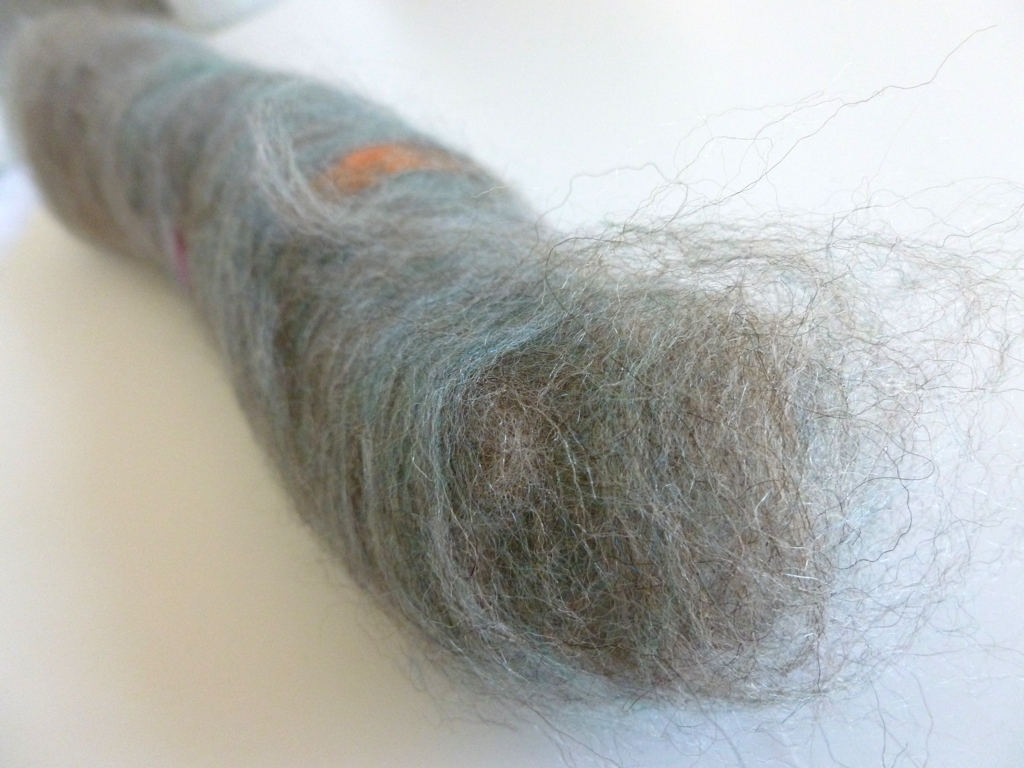Adventures With A Drum Carder
/I blame the Romney I bought at last Saturday’s spinning guild meeting. The fiber is lovely, soft, and clean but it still needs to be prepped for spinning. Unfortunately, I have no way to prep said fiber which prompted the last minute decision to rent the guild’s drum carder. It’s definitely large and in charge. So large, in fact, that I brought it home in a rolling duffle bag. Just what exactly I’d gotten myself into? Then guilt set in because there were only 2.5 ounces of Romney compared to the enormity of this hungry machine. The guilt didn’t last long because I started to remember all the alpaca, angora, and random bits of wool that have been sitting un-prepped and un-spun in my stash for years. And what about all that roving? Maybe I could experiment with that too. See ya later, Guilt.
The first thing to hit the drum was some random bits of practice grab bag wool. Before feeding it through the drums, I pulled the chunks apart to thin them down a little. Didn’t worry about color or anything else. The wool went in until the drum was full and there still half a bag left to play with.
The colors blended beautifully though there are still random spots of solid blue after 3 passes through the carder. Looking forward to spinning it up and seeing the finished yarn.
Since this was my first time using a drum carder, or a carder of any kind, I’m amazed at the transformation. Before, there were just squishy clumps of wool I didn’t know what to do with. Now, I’ve got something that I can’t wait to spin. Also, the process was a blast. Get to play with wool and fiber? Check. Get to play with color? Check. Get to make stuff? Double check. Me thinks that I’ve fallen down the rabbit hole and I have no idea how deep it goes.
Since making those first 2 batts, I’ve done a little more research on how to properly use a drum carder. How to clean one too. The best info I’ve found is a 3-part series from vampy.co.uk. Part 1 is all about the basics of how a drum carder works and the necessary accoutrements. Part 2 is about carding raw fleece. Part 3 is about how to blend fibers. Now that I’m armed with a little more knowledge, I’m ready to play around, experiment, and make more batts.


























